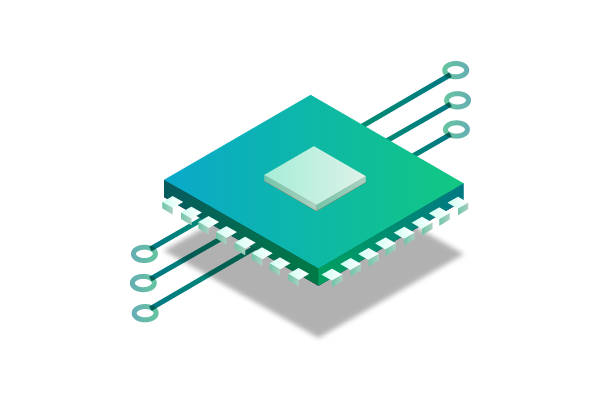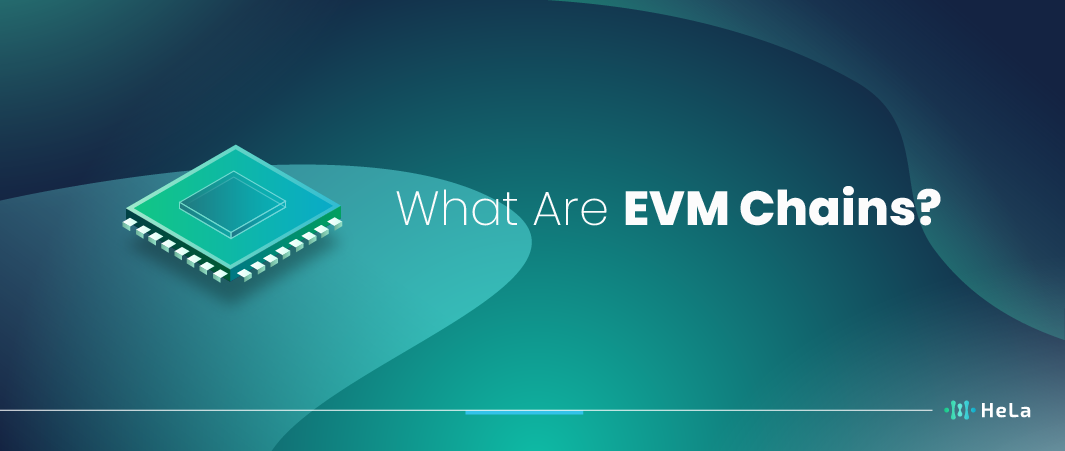With the rapid advancements in the blockchain world, various terminologies and technologies are coming to the forefront. Among these, “EVM chains” have risen in popularity and relevance. But precisely what are they? EVM chains, to put it basically, are blockchain systems that utilize the Ethereum Virtual Machine (EVM) to carry out shrewd contract execution. With the assistance of this paper, you ought to be able to comprehend the specialized highlights of EVM chains, see their down to earth applications, and pick up an intensive knowledge of their significance within the current advanced time.
The Ethereum stage is eminent for being among the primary within the expansive field of blockchain innovation to empower decentralized applications. Although Ethereum is unquestionably strong, other platforms also make use of the EVM’s features. In an effort to provide the world of decentralized apps with scalability, security, and versatility, numerous chains have been established and structured around this virtual machine.
You will learn about the different types of EVM chains, how they function inside the larger blockchain ecosystem, and their practical ramifications. Let’s go on this fascinating adventure!
What Are EVM Chains?

Vitalik Buterin’s Ethereum created a stir when it unveiled the Ethereum Virtual Machine (EVM). As long as developers have adequate time and memory, the EVM functions similarly to a flexible computer system that allows them to run any kind of software, regardless of the language used. EVM chains started to appear as a result of people seeing the potential of the EVM in other blockchain networks as Ethereum gained traction. In spite of the fact that they aren’t specifically associated with the most Ethereum arrays, these blockchains make use of the Ethereum Virtual Machine.
Let’s now explore the details of these EVM chains in more detail. Consider them distinct blockchains with certain Ethereum-like features, but powered by EVMs. They can run smart contracts and decentralized applications, just like Ethereum. However, EVM chains have their own networks and tokens, not relying on the main Ethereum network. This expansion of the EVM to other chains has opened up new possibilities for developers, making it easier for them to work with blockchain technology.
Technical Intricacies of EVM Chains

The term “EVM Chains,” which stands for “Ethereum Virtual Machine Chains,” alludes to an assortment of mechanical subtleties that upgrade the operation and convenience of the blockchain biological system. These chains, which are an expansion of the Ethereum organization, were made in reaction to a few of the speed and versatility issues with the initial Ethereum blockchain.
EVM Compatibility
EVM Chains maintain compatibility with the Ethereum Virtual Machine (EVM), which means that applications and smart contracts developed for Ethereum can be seamlessly deployed and run on EVM Chains. This compatibility ensures that developers can leverage their existing knowledge and codebase.
Interoperability
EVM Chains often incorporate interoperability features that enable them to communicate and exchange assets with other blockchain networks. This interoperability is essential for the broader adoption and utility of EVM Chains in the decentralized finance (DeFi) ecosystem.
Consensus Mechanisms
EVM Chains may use different consensus mechanisms, such as Proof of Stake (PoS) or Delegated Proof of Stake (DPoS), to improve scalability and reduce energy consumption compared to the original Ethereum network’s Proof of Work (PoW) consensus. These consensus mechanisms are critical for maintaining network security and validating transactions.
Sharding
Some EVM Chains implement sharding, a technique that divides the network into smaller, interconnected subsets known as shards. Sharding improves transaction throughput and reduces congestion on the network by processing multiple transactions simultaneously.
Layer 2 Solutions
To further enhance scalability, EVM Chains often integrate Layer 2 solutions like Optimistic Rollups and Plasma. These solutions offload a significant portion of transaction processing to secondary layers, reducing congestion on the main chain.
Cross-Chain Communication
EVM Chains are designed to facilitate communication and asset transfer between different blockchain networks. This enables users and developers to interact with assets from multiple chains seamlessly.
Governance Models
EVM Chains may have different governance models, which determine how network upgrades and changes are proposed and implemented. Some use on-chain governance, where token holders vote on proposals, while others employ off-chain governance structures.
Security Measures
In order to guard against weaknesses and attacks, EVM Chains use a range of security mechanisms, such as sophisticated cryptography, bug reward programs, and auditing of smart contracts.
Economic Incentives
EVM Chains often rely on token-based economic incentives to reward network participants, including validators, stakers, and developers. These incentives are crucial for network security and the sustainability of the ecosystem.
Developer Tooling
EVM Chains offer a range of developer tools and resources, including SDKs (Software Development Kits), APIs, and documentation to facilitate the creation of decentralized applications (dApps) and smart contracts.
Cross-Platform Compatibility
EVM Chains can be accessed through various client software and interfaces, making them accessible to a wide range of users and developers across different platforms and devices.
These technical intricacies collectively contribute to the development and adoption of EVM Chains, offering a robust, scalable, and versatile platform for blockchain-based applications, DeFi projects, and various other use cases in the world of decentralized finance and beyond.
Also Read: The 10 Most Cost-Effective Layer 1 Solution You Need to Know!
Practical Implications of EVM Chains

EVM chains, or Ethereum Virtual Machine chains, are a key component in the blockchain and cryptocurrency ecosystem, offering a wide array of practical applications in the real world. These applications leverage the capabilities and functionalities of EVM chains to address various issues and provide innovative solutions in different domains. Some of the practical implications of EVM chains include:
Smart Contracts
EVM chains are primarily known for enabling the execution of smart contracts. Smart contracts are self-executing contracts that have their terms encoded directly into the code. Their uses are numerous and include supply chain management, healthcare, banking, and decentralized apps (DApps). They can also be used to automate financial transactions like lending and borrowing.
DeFi (Decentralized Finance)
EVM chains are the backbone of the DeFi ecosystem, which is revolutionizing traditional financial services. DeFi applications built on EVM chains offer services like decentralized lending and borrowing, yield farming, decentralized exchanges (DEXs), and more. These services provide users with greater control over their financial assets and reduce reliance on centralized intermediaries.
NFTs (Non-Fungible Tokens)
EVM chains are used to create, buy, and sell NFTs, which represent ownership of unique digital assets. NFTs have applications in the art world, gaming, collectibles, and beyond. They allow for proven ownership and provenance of digital content, opening up new possibilities for creators and collectors.
Supply Chain and Logistics
EVM chains can be used to build blockchain solutions for tracking the provenance of products in supply chains. This ensures transparency and traceability, reducing fraud and counterfeit products. It’s particularly valuable in industries like food, luxury goods, and pharmaceuticals.
Voting Systems
EVM chains offer secure and transparent platforms for building electronic voting systems. These systems can enhance the integrity of elections, reduce the potential for fraud, and provide a tamper-resistant audit trail for electoral processes.
Tokenization of Assets
EVM chains enable the creation of digital tokens representing physical assets like real estate, art, and commodities. This tokenization can make traditionally illiquid assets more accessible for investment and trading.
Identity Verification
EVM chains can be utilized for creating secure, decentralized identity verification systems. This has the potential to reduce identity theft and streamline user authentication for various online services.
Cross-Chain Communication
EVM chains can facilitate interoperability between different blockchain networks. This means assets and data can be transferred seamlessly between EVM chains and other blockchain ecosystems, promoting a more connected and efficient blockchain space.
Gaming and Virtual Worlds
Blockchain-based virtual worlds and gaming systems that let users to safely exchange and own in-game currencies and assets are powered by EVM chains.
Energy and Sustainability
EVM chains can be employed to create transparent and secure platforms for tracking and trading renewable energy certificates, reducing carbon emissions, and promoting sustainable energy practices.
Education and Credential Verification
EVM chains can be used to store and verify educational credentials and certificates, making it easier for employers and institutions to verify the authenticity of qualifications.
These practical applications demonstrate the versatility and potential of EVM chains in reshaping various industries and processes. As blockchain technology continues to evolve, EVM chains are likely to play an even more significant role in shaping the future of decentralized and secure digital solutions.
Also Read: The Essence of Peer-to-Peer Payments
Challenges and Critiques
In spite of the fact that Ethereum Virtual Machine (EVM) chains have picked up a parcel of footing and have been fundamental to the development of the blockchain and cryptocurrency industry, they are not without issues and reactions. As the client base has developed and innovation has progressed, these issues have ended up more discernible. The following are some of the main objections and difficulties with EVM chains:
Scalability
One of the most pressing challenges facing EVM chains is scalability. For example, during times of high usage, the original Ethereum network has seen congestion and high gas fees. TThere’s a constrain to how numerous exchanges the Proof of Work (PoW) agreement instrument can prepare in a moment. Indeed in spite of the fact that Ethereum went to Proof of Stake (PoS) and present fixes like Ethereum 2.0 to extend adaptability, numerous EVM chains still battle with this.
Energy Consumption
EVM chains, like Ethereum, have faced criticism for their energy-intensive PoW consensus mechanism. Mining’s negative environmental effects on these networks have generated controversy, especially in light of growing global awareness of climate change issues. Making the switch to PoS is said to be one way to cut energy use.
Network Congestion
EVM chains often experience network congestion during times of high demand, causing slow transaction confirmation times and increased fees. This can hinder the usability of decentralized applications (DApps) and make it less cost-effective for users to interact with the network.
Gas Fees
Gas fees are transaction fees paid by users to prioritize and execute transactions on EVM chains. These fees can vary widely and have been a point of contention, as they can make some DApps prohibitively expensive to use. Solutions like Layer 2 scaling and Ethereum Improvement Proposals (EIPs) aim to address this issue.
Interoperability
While EVM chains have seen widespread adoption, interoperability between different blockchain networks remains a challenge. Cross-chain compatibility and communication are essential for the development of a seamless decentralized ecosystem. Projects like Polkadot and Cosmos are working on solutions to enhance interoperability.
Security Vulnerabilities
Smart contracts on EVM chains are known to have security vulnerabilities, leading to various hacks and exploits. Developers need to be extremely cautious and thorough when creating and auditing smart contracts to avoid potential vulnerabilities.
Regulatory Concerns
The regulatory environment for EVM chains and cryptocurrencies in general is still evolving and can pose challenges for developers and users. Governments worldwide are grappling with how to regulate this emerging technology, which can result in uncertainty and compliance hurdles.
Centralization Concerns
Some critics argue that EVM chains, especially Ethereum, have become increasingly centralized due to the concentration of mining power and the dominance of certain projects and players. This raises concerns about the core principles of decentralization and censorship resistance.
Governance and Upgrades
Decentralized governance and decision-making for EVM chains can be challenging, leading to disputes and contentious hard forks. Coordinating network upgrades and maintaining consensus among stakeholders can be a complex process.
In spite of these obstacles and criticisms, the EVM ecosystem is changing and adapting. While the broader blockchain community investigates alternate technologies and techniques to get beyond these constraints while upholding the goal of decentralized, secure, and effective systems, developers are actively working on solutions to address these problems.
Conclusion
The blockchain environment is changing as a result of EVM chains’ extensive applicability and superior technological capabilities. They exemplify the evolution of decentralized technology, bringing together the best of Ethereum’s capabilities while aiming to address its limitations.
But like any technology, EVM chains have their share of difficulties. In order to make wise decisions, developers, investors, and users must be aware of these difficulties. We may expect further breakthroughs and solutions as the ecosystem develops, which will strengthen the standing of EVM chains in the blockchain industry.
Ultimately, EVM chains are a monument to the infinitely creative spirit of humanity as much as a technological wonder. We’re on the verge of a decentralized future, and EVM chains will surely be crucial in forming this new phase.
Disclaimer: The information provided by HeLa Labs in this article is intended for general informational purposes and does not reflect the company’s opinion. It is not intended as investment advice or recommendations. Readers are strongly advised to conduct their own thorough research and consult with a qualified financial advisor before making any financial decisions.

I am Carina Caringal, a technical writer specializing in blockchain engineering concepts, decentralized systems, crypto infrastructure, and Web3 technologies. My work focuses on analyzing and translating complex technical mechanisms into precise, structured, and insightful content for both developers and non-technical readers who want a deeper understanding of the decentralized ecosystem.
My background in blockchain and cryptocurrency is rooted in years of independent research, continuous learning, and hands-on exploration across multiple protocols and network architectures. I study the underlying mechanics of distributed ledger technology, from consensus algorithms and smart contract logic to network scalability, security models, cryptographic principles, and interoperability frameworks. This technical foundation shapes the way I approach every article, ensuring accuracy, depth, and relevance.
- Carina Caringalhttps://helalabs.com/blog/author/carina-caringal/
- Carina Caringalhttps://helalabs.com/blog/author/carina-caringal/
- Carina Caringalhttps://helalabs.com/blog/author/carina-caringal/
- Carina Caringalhttps://helalabs.com/blog/author/carina-caringal/

